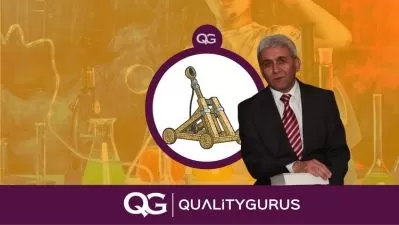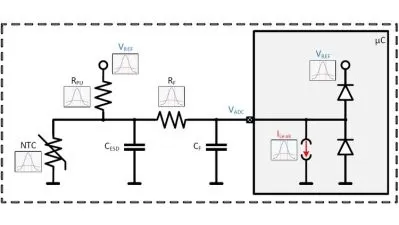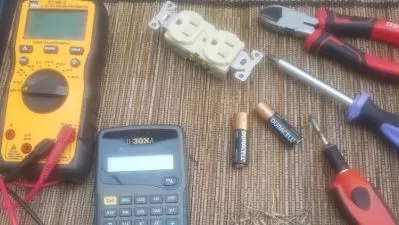Basics of Circuit Theory
Syed Hasan Saeed
4:38:04
Description
Fundamentals of circuit theory. Ohm's law, Kirchhoff's law, Thevenin's theorem, Norton's theorem, Maximum Power Theorem
What You'll Learn?
- To understand the concepts of Basic Units of electrical engineering.
- To understand the concepts of Basic definitions of different terms used in circuit theory
- To understand the concepts of basic elements used in circuit theory also commonly used in electrical engineering
- To learn the analysis of electrical circuits by basic law’s, DC theorems and Kirchhoff’s law
- To understand the concepts to solve the electrical circuits
- To provide a systematic approach for analysis of circuits and solution of electric circuits
- Student shall be able to understand and analyze the series, parallel and series-parallel combination of the elements.
Who is this for?
What You Need to Know?
More details
DescriptionThis course is designed for the students of 12th class and first year engineering students for all branches where the course Basic Electrical Engineering is in their curriculum. In this course student shall be able to understand the basic units, derived units, basic electrical elements, combination of elements, analysis of the given circuit in terms of voltage, current and power. Also student shall be able to analyze the circuit by using Ohm's Law, Kirchhoff's law, Thevenin's theorem, Norton's Theorem, Maximum Power Transfer Theorem. After completion of this course student can solve the circuit. Student can learn different types of input signals used in circuit theory.
This is basic course by which fundamentals are clear and can be helpful to analyze the circuit. In this course student shall be under stand the series, parallel and series-parallel combination of the circuit elements. Student shall be able to formulate the equilibrium equations using Kirchhoff's law, mesh analysis and nodal analysis for DC circuits. This Circuit theory course provides you the knowledge of basic principles that you need to understand the behavior of electric circuits. A step by step procedure emphasizes principles and concepts. Solved examples step by steps are provided in each section also unsolved problems with answers will be provided. This course clears the student's doubts about the analysis of given circuit. Â
Who this course is for:
- Students of class 12, B. Tech of first year students for all branches of engineering.
This course is designed for the students of 12th class and first year engineering students for all branches where the course Basic Electrical Engineering is in their curriculum. In this course student shall be able to understand the basic units, derived units, basic electrical elements, combination of elements, analysis of the given circuit in terms of voltage, current and power. Also student shall be able to analyze the circuit by using Ohm's Law, Kirchhoff's law, Thevenin's theorem, Norton's Theorem, Maximum Power Transfer Theorem. After completion of this course student can solve the circuit. Student can learn different types of input signals used in circuit theory.
This is basic course by which fundamentals are clear and can be helpful to analyze the circuit. In this course student shall be under stand the series, parallel and series-parallel combination of the circuit elements. Student shall be able to formulate the equilibrium equations using Kirchhoff's law, mesh analysis and nodal analysis for DC circuits. This Circuit theory course provides you the knowledge of basic principles that you need to understand the behavior of electric circuits. A step by step procedure emphasizes principles and concepts. Solved examples step by steps are provided in each section also unsolved problems with answers will be provided. This course clears the student's doubts about the analysis of given circuit. Â
Who this course is for:
- Students of class 12, B. Tech of first year students for all branches of engineering.
User Reviews
Rating
Syed Hasan Saeed
Instructor's Courses
Udemy
View courses Udemy- language english
- Training sessions 36
- duration 4:38:04
- Release Date 2024/05/04
















